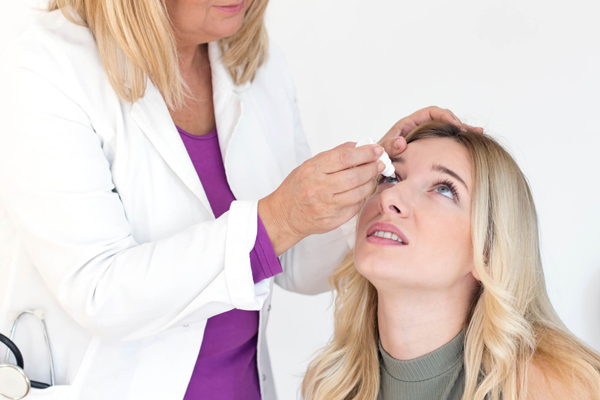Determining the Difference Between Dry Eye Disease and Allergies
Throughout the year — especially during seasonal changes — you may experience dryness, itching, or redness in your eyes. These symptoms can cause significant discomfort and, if left untreated, may lead to irritation or long-term damage.
To properly address these issues, it’s important to identify their root cause. Your symptoms might stem from allergies or dry eye disease, and while the conditions share similarities, they require different approaches. Here’s what you should know:
Dry Eye Disease
Dry eye disease occurs when your eyes don’t produce enough tears or when the tears lack proper quality. One common cause is meibomian gland dysfunction (MGD), which occurs when oil glands in your eyelids become blocked. This prevents tears from forming the protective oil layer they need, leading them to evaporate too quickly.
Tears are made up of three layers — oil, water, and mucus — and an imbalance in any of these can cause dry eye symptoms.
You may be at higher risk for dry eye disease if you have:
- A history of eye surgery or injury
- Hormonal changes
- Age over 50
- Female gender
- Frequent exposure to heat, smoke, or wind
When tears are insufficient or imbalanced, your eyes may feel dry, appear red, and become sensitive to light. You might also experience blurry vision and find contact lenses uncomfortable.
While over-the-counter eye drops and warm compresses can ease symptoms, dry eye disease does not resolve on its own. Because its signs can mimic other conditions — including allergies — it’s essential to see an eye doctor who can identify the underlying cause and recommend lasting solutions to protect your vision.
Allergies
Allergic conjunctivitis occurs when the conjunctiva — the thin tissue covering your eyelids and the whites of your eyes — becomes inflamed after exposure to allergens. When this happens, your body releases histamine as part of its immune response, triggering redness, itching, and swelling.
Common allergens include pollen, pet dander, and environmental irritants. Seasonal allergies can make things even trickier, as symptoms may appear only at certain times of the year and disappear before you seek treatment.
Treatment usually involves antihistamines, either prescribed or over the counter, to reduce inflammation and ease irritation. These may come in eye drop or pill form, and warm compresses can also provide relief.
Finding the Solution
Dry eye disease and allergies can look very similar. Both may cause redness, tearing, and itching, especially during allergy season or around pets. Interestingly, despite its name, dry eye disease can sometimes lead to excessive tearing when tear quality is poor. Allergies can also worsen dry eye symptoms when they occur simultaneously.
Although treatments overlap, their effectiveness depends on addressing the root cause — something only an eye doctor can determine.
At Buffalo Ophthalmology, all of our doctors are experienced in treating general dry eye cases. We are also fortunate to have a dedicated dry eye specialist, Asha Kumar, M.D., who can perform a thorough evaluation to pinpoint the cause of your symptoms. Depending on her findings, treatment may include advanced therapies such as medicated eye drops, amniotic membranes, gland activation, serum tears, and more.
Dry Eye Disease and Allergy Treatment in Buffalo
If you’re struggling with persistent eye discomfort, don’t wait for it to go away on its own. Schedule your appointment today to find relief and protect your long-term eye health.

Request Appointment
"*" indicates required fields

